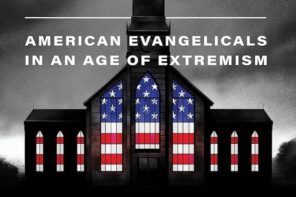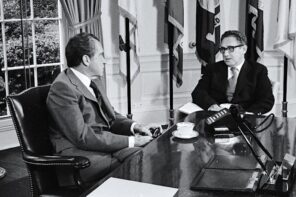Church councils are never simple things, neither when they’re happening nor in their aftermath. Although often called to confront troubling questions or iron out controversies, they haven’t always been successful in accomplishing those tasks over the past nearly 1,700 years. There have been twenty-one “ecumenical (universal) councils,” beginning with the First Council of Nicea (325 CE) and ending most recently with the Second Vatican Council (1962-65), and in each case there has been resistance to their decisions, ranging in scope from simple foot-dragging to outright rejection and schism. In other words, when the Church makes changes, someone is always upset.
One major line of dissent that’s persisted in our own time, following the reforms of Vatican II, centers around changes to the Mass. Most recently articulated by right-wing pundit Michael Brendan Dougherty in The New York Times, the dissent laments the loss of Latin as the language of celebration and the heady ritual and material artifice that was thought to have accompanied it. (It should be noted that while these changes may appear to the casual observer to focus on trivial or superficial details, the implications are quite meaningful and wide-ranging.) The piece is, by the author’s own admission, an attack on the leadership of Pope Francis and how he’s used the papal throne to enforce the reforming spirit of the latest council. It’s a curious piece, making sweeping (and often untrue) claims to support its points while channeling generations-old talking points to advance a political agenda. The program of such reactionary Catholics is to erase tradition and adaptation, and to ultimately—and ironically—make the Church more “Protestant.”
Dougherty’s argument is that desire for the so-called “Latin Mass” is large and growing; that the priest, in facing the altar in this rite is more in touch with the congregation; and that (perhaps most importantly for him) ultimately the liturgical reforms restricting the Latin Mass have ended “real” Catholicism. He writes, “I believe the practice of the new Mass forms people to a new faith” and that people like him should resist these changes with the saying “We resist you to the face” (a statement, I’d note, with a troubling antisemitic history). He concludes by arguing that the reforms of Vatican II were “the worst spasm of iconoclasm in the church’s history—dwarfing the Byzantine iconoclasm of the ninth century and the Protestant Reformation.”
It’s worth taking these three points one at a time. First, desire for the Latin Mass is not large—as of July 2021 (when Pope Francis issued his statement in opposition), only a bit under 4% of all American parishes offered it. This particular reaction to the reforms of Vatican II is, and has consistently been, a small, fringe movement. Second, the priest faced away from the congregation during the Latin Mass because the congregation was (and remains, honestly) irrelevant to its celebration. Regular Sunday attendance was never required, or even recommended, for the congregation for much of Christian history, until well into the Protestant Reformation—about the same time seating was introduced to churches themselves.
The architecture of Catholic churches built before modernity emphasized this distinction, with rings of sacred space radiating outward from the altar. Only churchmen would be allowed in the choir, which would be separated from the rest of the building by some sort of screen. If anything, the removal of the screens and turning of the priest to face the congregation allowed lay people into the service, since they could at least see what’s going on.
But the biggest claim Dougherty makes in his piece, of course, is about the spirit of the ecumenical council—that it created a “new faith.” It’s an old song within the Church. If a constant refrain within Catholicism is ecclesia semper reformanda (“the church is always being reformed”), then there’s always someone else complaining that those reforms have perverted the “true” nature of Christianity. Dougherty makes it clear, and takes it further, when he compares these nearly 60-year-old reforms to instances of medieval schism. By doing so, he and his compatriots are trying to draw a direct line back to antiquity, back to what they consider “pure” Christianity. The reasoning goes that schismatics troubled the faithful in the 9th century, in the 16th, and now in the 21st. But the Church endured and so-called “traditional Catholics” will light the way forward.
This is a reasoning often employed by the Right, one I’ve elsewhere called the “rainbow connection.” It’s a type of argument that appears historical but actually hops and skips over the messy bits that actually connect historical moments. The continued survival of Catholicism derives from its tradition, its ability to adapt to changing circumstances. Although consistently celebrated across the centuries, the form and the weight of the Mass’s component parts relative to one another have varied in different times and places. As scholar John F. Romano has written, “In spite of some common features, a visitor to medieval Europe would have encountered a bewildering array of ways to celebrate the Eucharist.”
The Fourth Lateran Council (1215 CE), for example, articulated the idea that, like a series of concentric circles, the Church spins around the regular celebration of the Mass, which in turn spins around the sacrament of the Eucharist performed by an ordained priest. But it hadn’t always been so—Lateran IV was a reaction to other Late Antique and medieval controversies that had led to accusations of heresy and holy war. Indeed, the so-called “Latin Mass” that the Right continues to reference itself has a history, developed in the 16th century after the Council of Trent. It hasn’t always been there and doesn’t necessarily need to continue.
In this particular case, the messy bits are particularly interesting. In each case, the reforms of an ecumenical council helped the Church weather theological attacks against it. The Second Council of Nicea (787) repudiated the Byzantine Iconoclasm and the Council of Trent (1545-63) reorganized Catholicism against incipient Protestantism. If we’re following this logic, those who resist Vatican II are aligning themselves with medieval iconoclasts and schismatics.
In the end, the Right, in continuing to resist Vatican II, itself invokes a timelessness of tradition. But they use the past as a prop, ignoring a host of reforms that, for example, attempted to atone for centuries of horrendous anti-Judaism, and instead make a moral and political argument cloaked as a useful analogy. Such invocations of the past do no harm to the dead, but they do harm the future. The Church is still dealing with a deafening sex abuse scandal (which, curiously, Dougherty never mentions). If this isn’t the moment to embrace reform, then when is the moment?





